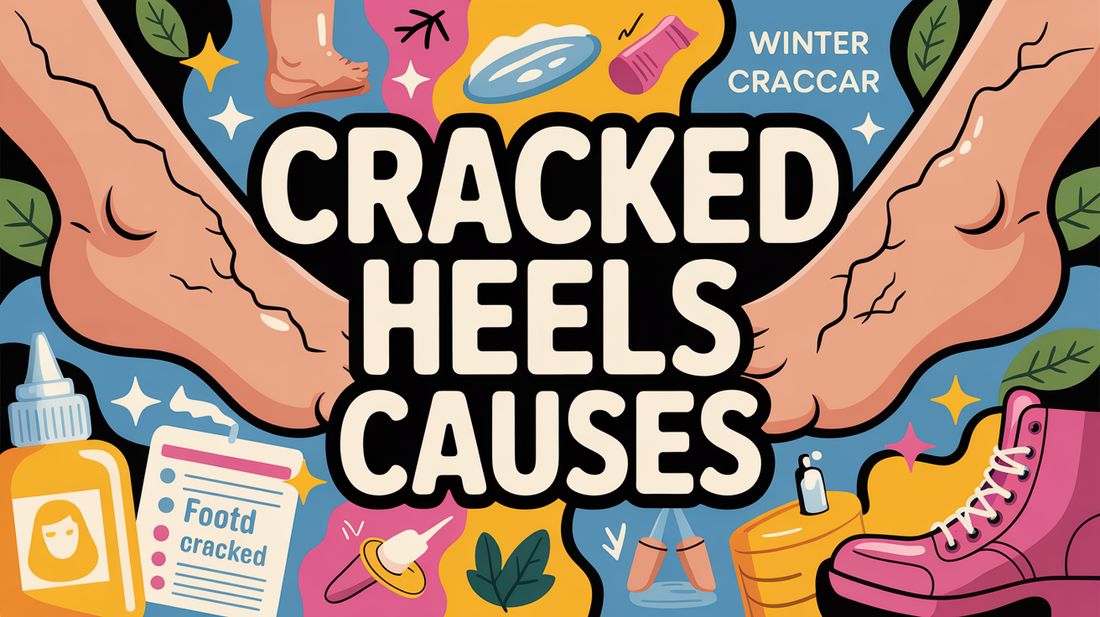Cracked Heels Causes
cracked heels causes, why heels crack, underlying reasons for cracked feet — Cracked heels can be a common concern, leading to discomfort and self-consciousness. Understanding the causes of cracked heels can empower you to take steps toward smoother, healthier feet. This post is organized into three distinct sections to help you identify the issues and take action tonight.
Environmental and Lifestyle Causes of Cracked Heels 🧭
Cracked heels are often linked to environmental and lifestyle factors that can dry out and damage the skin on your feet. For instance, dry air and low humidity, particularly during winter months, can strip moisture from heel skin, leading to cracks. Prolonged standing or walking on hard surfaces can also put excessive pressure on your heels, causing the skin to thicken and eventually split.
Hot showers and baths, while comforting, can remove natural oils from your skin, making your heels more prone to drying out. Additionally, frequently wearing open-back shoes or flip-flops, or going barefoot, may expose your heels to environmental damage and decrease moisture retention. A lack of proper foot hygiene and moisturizing routines can also allow dead skin to build up, increasing crack formation.
- Stay hydrated and use a humidifier during dry seasons.
- Opt for supportive footwear rather than open-back shoes.
- Limit hot showers to maintain skin oils.
- Establish a daily foot care routine to keep skin smooth.
- Regularly moisturize to prevent dryness.
Try It Tonight: Calm, Fresh Feet ✨
- Wash your feet with warm water and a mild cleanser; dry thoroughly between your toes.
- Apply a small amount of Kissable Feet where needed; massage until absorbed.
- Let your skin breathe; slip on breathable socks if desired. Patch-test first if you’re new to this foot cream.
Medical Conditions That Contribute to Cracks ✨
Some medical conditions can greatly increase the risk of developing cracked heels by affecting skin health, circulation, or the body’s moisture levels. For example, diabetes can lead to poor circulation and nerve damage in the feet, which may reduce sensation and slow healing of heel cracks. Conditions like hypothyroidism can cause widespread dryness, including in the heels, while inflammatory skin conditions like eczema and psoriasis often lead to chronic dryness and cracking.
Additionally, fungal infections such as athlete's foot can damage the skin barrier, making heels more vulnerable to cracking. Lastly, obesity can increase pressure on the feet, causing the fat pad under the heel to expand and further stress the skin, prompting crack formation.
- Monitor blood sugar levels and manage diabetes effectively.
- Consult with healthcare providers for thyroid management.
- Seek treatment for any skin conditions that cause dryness.
- Practice good foot hygiene to prevent infections.
- Maintain a healthy weight to reduce pressure on your feet.
Why We Recommend a Gentle Helper 🌿
Kissable Feet is designed for quick absorption and provides a soothing, non-sting feel. Its nurse-crafted blend of tea tree, coconut, and calendula is ideal for comforting tired feet, making it an easy addition to your nightly routine.
- Fast-absorbing comfort with a non-greasy finish.
- Gentle sensation for sensitive, overworked feet.
- Clean, bedtime-friendly scent that soothes the senses.
How to Address Causes, Not Just Symptoms 🔍
To effectively treat cracked heels, it’s essential to address the underlying causes rather than merely applying topical solutions. Start by modifying lifestyle habits, such as improving your footwear choices and reducing time spent barefoot. Establishing a consistent foot care routine that includes daily moisturizing and gentle exfoliation can also be beneficial.
Moreover, managing underlying medical conditions with your healthcare provider's guidance is crucial for long-term relief. Make environmental adjustments like using humidifiers during dry months and protecting your feet from extreme temperatures. In severe cases, seeking professional podiatric care can help rule out infections and provide specialized treatments.
- Identify and change lifestyle factors; choose supportive footwear.
- Commit to a daily moisturizing and exfoliating routine.
- Work with healthcare professionals to manage any medical conditions.
- Use humidifiers to keep the air moist during dry seasons.
- Consult a podiatrist for personalized advice and treatment.

